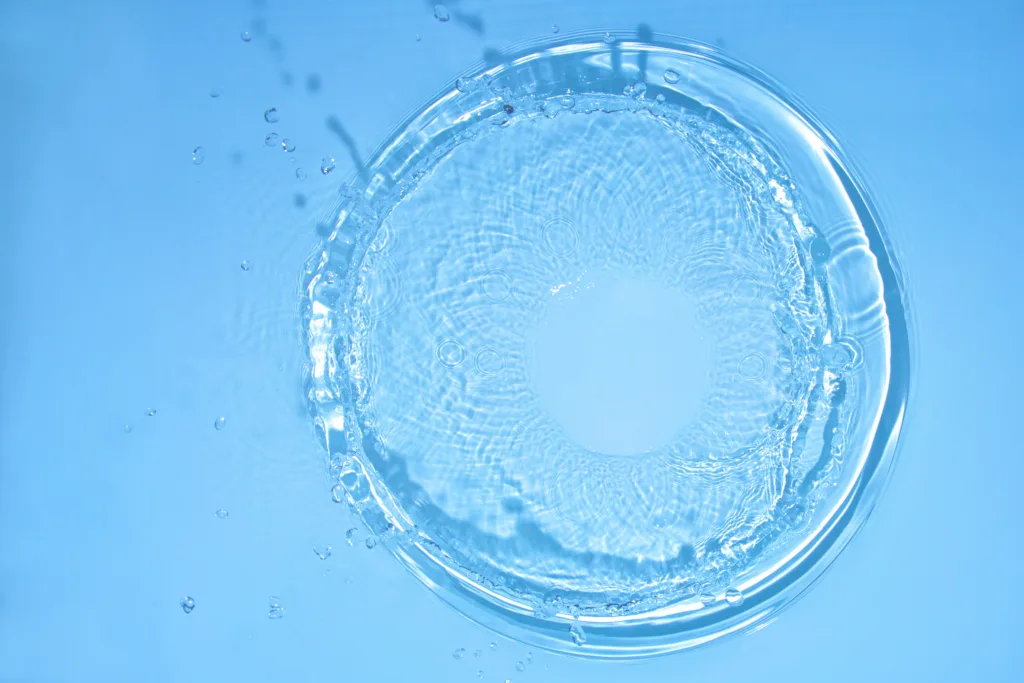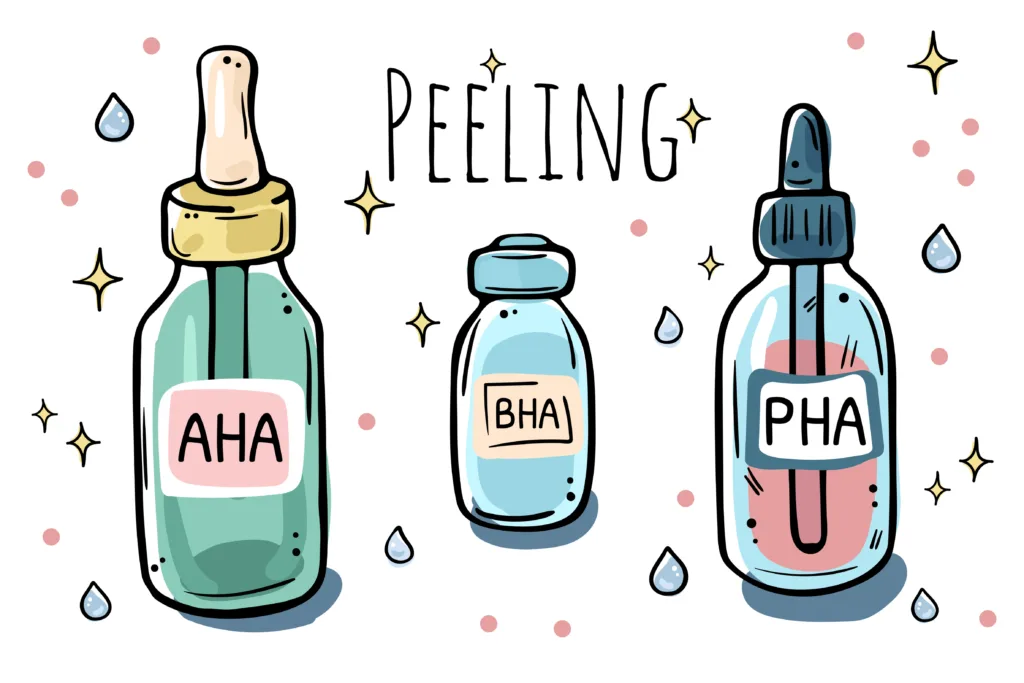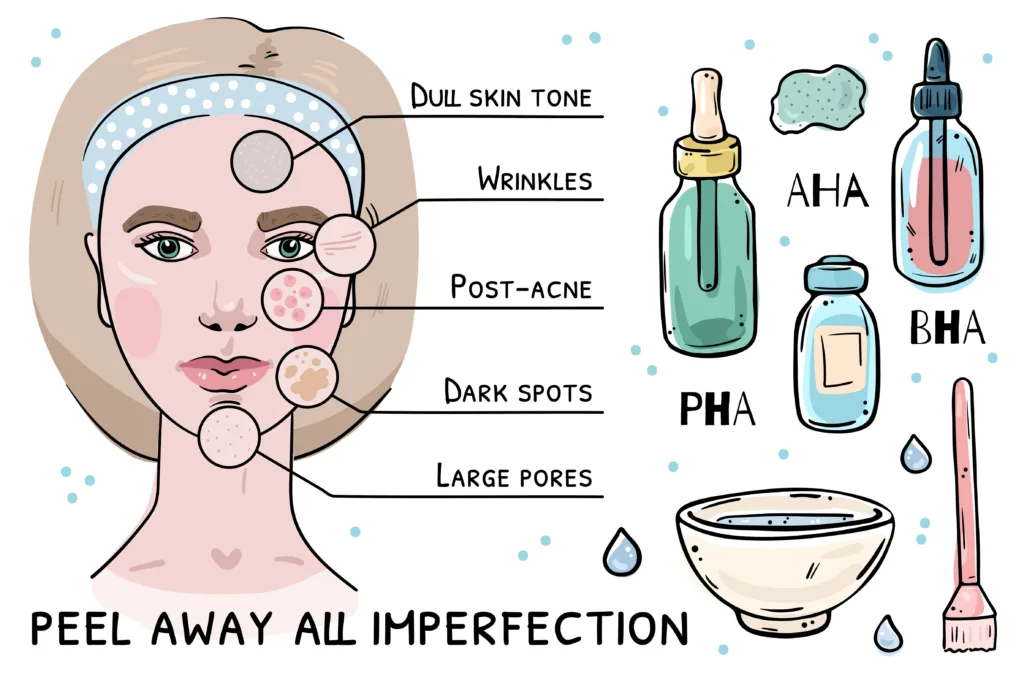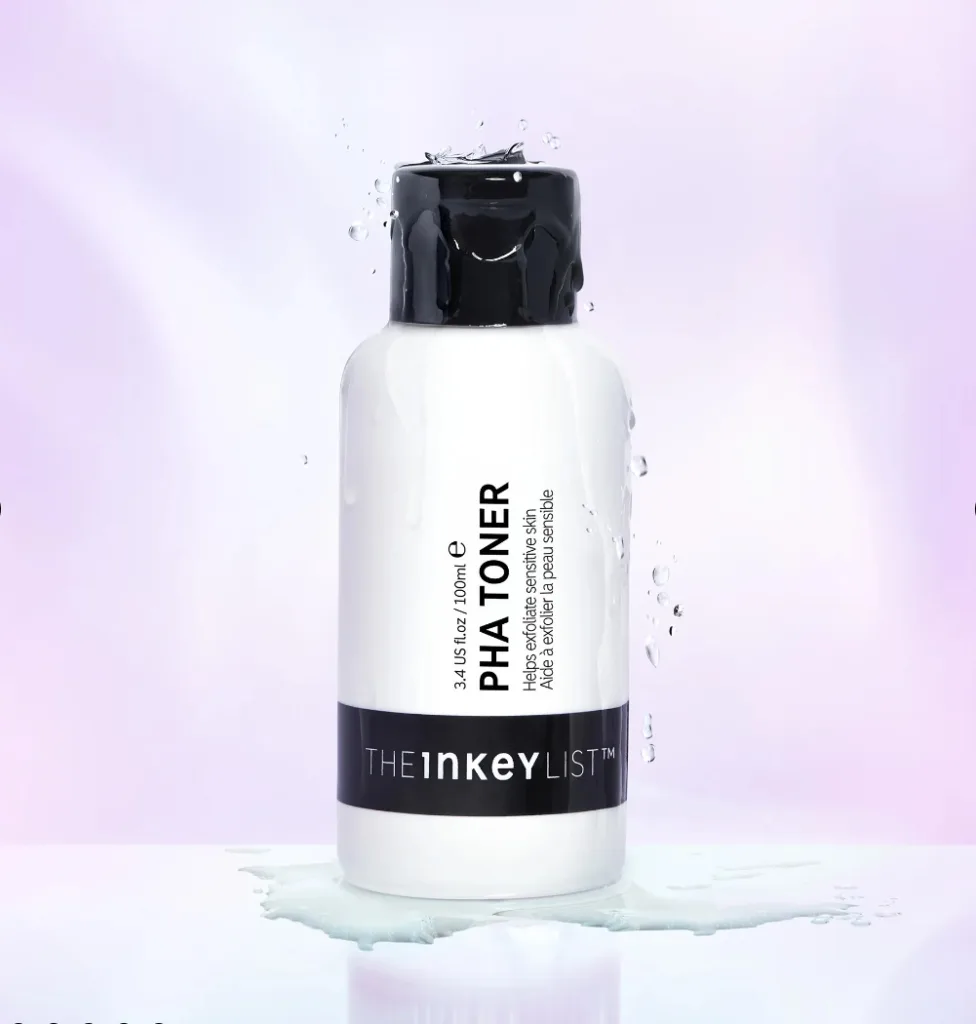
Polyhydroxy acids (PHAs) are a group of gentle chemical exfoliants that can be a game changer for your skincare routine. They’re often considered the ‘cousins’ of alpha hydroxy acids (AHAs) but with some key differences. PHAs work by sloughing off dead skin cells from the surface of your skin, promoting a healthier, more radiant complexion.
Some common PHAs include gluconolactone, galactose, and lactobionic acid.
One of the main advantages of incorporating PHAs into your skincare routine is their suitability for almost all skin types, including oily and acne-prone skin.
These mild acids offer gentle exfoliation, causing less irritation than AHA counterparts. They are ideal for sensitive skin or those seeking milder exfoliants.
Including PHAs in your skincare routine three times a week can help improve your skin’s appearance and texture, reducing signs of damage and creating a smoother, more even complexion.
Look for products that contain polyhydroxy acids as a main ingredient. Gradually incorporate these products into your daily routine for optimal results.
Understanding Polyhydroxy Acids (PHAs)
Chemical Structure and Classifications
Polyhydroxy acids (PHAs) are a group of chemical exfoliants within the larger family of hydroxy acids.
They possess a unique molecular structure, with multiple hydroxy groups attached to their carbon backbone, distinguishing them from their counterparts, alpha-hydroxy acids (AHAs) and beta-hydroxy acids (BHAs).
Some common examples of PHAs include gluconolactone, galactose, and lactobionic acid. These larger molecules possess gentle exfoliation properties and have the ability to promote skin hydration.
PHAs Vs AHAs and BHAs
When compared to AHAs and BHAs, PHAs offer some distinct advantages for your skincare routine:
- Gentler Exfoliation: PHAs provide gentler exfoliation by penetrating the skin slowly. This reduces the risk of irritation caused by their larger molecules. This makes them an excellent choice for those with sensitive skin or new to chemical exfoliation.
- Moisture Retention: PHAs have been found to retain moisture better than AHAs. This can make your skin look refreshed and hydrated.
- Antioxidant Properties: Some PHAs have shown antioxidant activity, helping to protect your skin against environmental stressors.
That being said, AHAs and BHAs still hold their place in skincare routines.
AHAs, such as glycolic and lactic acids, effectively remove dead skin cells and improve skin texture, while BHAs, like salicylic acid, are excellent at unclogging pores and controlling oil production.
Ultimately, choosing chemical exfoliants depends on your skincare needs and preferences. PHAs are a great option if you are seeking a gentler form of exfoliation or if you have sensitive skin.
Benefits of PHAs in Skincare

Hydration and Humectant Properties
Polyhydroxy acids (PHAs) hydrate your skin, making it smoother and healthier. Their humectant properties allow them to attract and retain moisture, ensuring your skin remains well-hydrated throughout the day. In addition to these hydrating benefits, PHAs also contribute to enhancing skin smoothness and elasticity.
Antioxidant Benefits
PHAs are not just great for hydration; they also offer antioxidant benefits that help protect your skin from environmental damage, such as pollution and harsh weather conditions.
These acids can neutralise harmful free radicals, making them an essential addition to your skincare routine, particularly if you want to maintain a youthful, radiant complexion.
Gentle Exfoliating Effects
One of the hallmarks of PHAs is their gentle exfoliating effects. Unlike other chemical exfoliants like alpha hydroxy acids (AHAs), PHAs work on the skin’s surface by exfoliating dead skin cells without disturbing the delicate layers that lie beneath. This makes them an excellent choice for people with sensitive skin or those who are prone to irritation from more potent exfoliants.
By incorporating PHAs into your skincare regimen, you can enjoy the benefits of chemical exfoliation while minimising the risk of irritation. To get started, consider using PHAs three times a week.
In short, incorporating PHAs into your skincare routine can offer numerous benefits, including enhanced hydration, powerful antioxidant protection, and gentle exfoliation. By using these acids regularly, you can expect to improve your skin’s overall health, smoothness, and radiance.
Types of PHAs and Their Uses
Polyhydroxy acids (PHAs) offer effective and gentle skin exfoliation benefits. In this section, we’ll explore specific PHAs, including Gluconolactone, Lactobionic Acid, and Galactose, and their uses in skincare products like serums and toners.
Gluconolactone
Gluconolactone, a popular PHA, is derived from gluconic acid. It’s revered for its gentle exfoliating properties and suitability for sensitive skin. As an exfoliant, it helps remove dead skin cells, unclog pores, and improve the appearance of fine lines and wrinkles.
Skincare products containing gluconolactone, such as serums and toners, provide adequate hydration to your skin while enhancing the skin’s texture and overall complexion. Use these products regularly to maintain healthy-looking, radiant skin.
Lactobionic Acid
Lactobionic acid is another widely used PHA in skincare products. It’s derived from lactose, a sugar found in milk. Its benefits include potent antioxidant properties and the ability to bind water molecules, thus providing hydration to your skin.
Incorporating products with lactobionic acid, like serums and toners, into your skincare routine can help combat signs of ageing while keeping your skin hydrated and protected from environmental stressors.
Additionally, its mild exfoliating properties make it an excellent choice for individuals with sensitive skin. You can use lactobionic acid-based products three times a week for optimal results.
Galactose
Galactose is a naturally occurring sugar that plays a role in the process of glycation – the formation of advanced glycation end-products (AGEs) that contribute to skin ageing. Although it’s primarily obtained through dietary intake, there are many benefits to using skincare products that contain this ingredient in their formulation.
Products containing galactose, such as serums and toners, aim to prevent glycation and promote a youthful, healthy complexion.
It’s essential to be diligent with your skincare routine. Regularly use products infused with galactose to slow down the ageing process. Like other PHAs, galactose-containing products can benefit people with sensitive skin. This is because PHAs have gentle exfoliation properties.
Make galactose-based skincare products a part of your routine for improved skin health and appearance.
PHAs and Different Skin Types

Polyhydroxy acids (PHAs) are chemical exfoliants known for their gentle action on the skin. They are suitable for various skin types and conditions, making them a popular choice in skincare routines.
This section will discuss the use of PHAs for sensitive skin care. It will also cover their use in acne management and for dry and atopic skin.
Sensitive Skin Care
PHAs can be a great choice if you have sensitive skin due to their gentler nature compared to AHAs and BHAs. They offer a minimal risk of irritation and can be safely used by those with rosacea or eczema-prone skin.
PHAs exfoliate dead skin cells from the surface, which helps improve skin texture without causing unnecessary inflammation.
Remember to start with a lower concentration and gradually increase the frequency of use to see how your skin reacts to the product.
Acne Management
PHAs are particularly helpful for people with acne or acne-prone skin, as they can unclog pores and reduce the accumulation of sebum. By gently exfoliating dead skin cells, PHAs prevent pore blockage, which is often the starting point for acne breakouts.
Furthermore, they can improve the appearance of acne scars by promoting cell turnover and revealing healthy new cells underneath.
Incorporate PHAs into your skincare routine three times a week to achieve the best results.
Dry and Atopic Skin Solutions
PHAs provide a significant advantage for those with dry and atopic skin, as they possess humectant properties, allowing for increased moisturisation. This means that, while exfoliating, they help retain water in the skin, resulting in a smooth and hydrated appearance. This characteristic benefits people with eczema or atopic dermatitis, as these conditions often entail dry and flaky skin.
Polyhydroxy acids cater to various skin types by offering sensitive skin care, acne management, and solutions for dry and atopic skin. Choose the right product based on your skin type and adjust the frequency of use to suit your specific skin needs.
Incorporating PHAs in Skin Care Routines
Selecting the Right PHA Products
When incorporating PHAs into your skincare routine, choosing the right products that cater to your specific skin needs is essential. Look for skincare products that contain active ingredients such as gluconolactone, galactose, and lactobionic acid.
One popular product to consider is The Inkey List PHA Gentle Exfoliating Toner. This toner is formulated with PHAs, making it suitable for those new to chemical exfoliants.
This toner uses polyhydroxy acids (PHAs) to gently remove dead skin cells, leaving your skin feeling smoother, brighter, and more even-toned. PHAs are larger molecules than AHAs, so they penetrate the skin more slowly and are less likely to irritate sensitive skin.

Remember to choose products based on your skin type:
- Oily skin: Opt for gel-based cleansers and lightweight moisturisers.
- Dry skin: Use cream-based cleansers and rich moisturisers.
- Sensitive skin: Select fragrance-free and hypoallergenic products with soothing ingredients.
How to Apply PHAs
Applying PHA products correctly is essential to achieving the best results. Follow these steps:
- Cleanse your face with a gentle cleanser to remove dirt and makeup.
- Apply the PHA product according to the instructions on the label. For toners, use a cotton pad to gently swipe across your face.
- Wait for the product to absorb fully before continuing with your routine.
- Moisturise with a suitable moisturiser for your skin type to help with hydration and barrier function.
It’s recommended to start by using PHAs in your skincare routine once or twice a week. Gradually increase the frequency as your skin tolerates it.
Combining PHAs With Other Ingredients
Polyhydroxy acids are compatible with most skincare ingredients. Here are some pairings to consider:
- Vitamin C: Using PHAs with vitamin C enhances the brightening and antioxidant effects on your skin.
- Retinol: PHAs can be used with retinol, but caution should be taken to avoid over-exfoliating or irritating the skin.
- Sunscreen: As PHAs can increase photosensitivity, using a broad-spectrum sunscreen with at least SPF 30 is important.
Always perform a patch test when introducing a new product with active ingredients into your routine to ensure your skin doesn’t react adversely.
Combine ingredients gradually and monitor your skin’s response. If any irritation occurs, discontinue use and consult a dermatologist.
Addressing Common Skin Concerns With PHAs

Ageing and Fine Lines
Polyhydroxy acids (PHAs) can help address signs of ageing, such as fine lines and wrinkles. They are gentle on your skin, enhancing skin texture and promoting collagen production.
As PHAs are derived from larger molecules in comparison to alpha hydroxy acids (AHAs), they penetrate the skin more slowly, reducing irritation while still providing effective exfoliation. This makes them suitable for sensitive and ageing skin.
Hyperpigmentation and Dark Spots
Hyperpigmentation and dark spots can concern many; however, PHAs can help improve your skin’s overall complexion. These acids, like other chemical exfoliants, promote cell turnover and help eliminate dead skin cells on the skin’s surface, which can reduce the appearance of dark spots and even out your complexion.
Furthermore, gentle PHAs like gluconolactone and lactobionic acid can be utilised safely on more sensitive skin types without causing irritation or inflammation.
Texture Improvement and Exfoliation
One of the key benefits of incorporating PHAs into your skincare routine is the improvement of your skin’s overall texture. These acids exfoliate dead skin cells effectively, revealing a smoother surface. By stimulating cell turnover, PHAs can help minimise the appearance of dullness and uneven texture, leaving your skin smoother and more radiant.
Notable PHAs to look out for in skincare products:
- Gluconolactone: Known for its moisturising and antioxidant properties, this PHA gently and effectively exfoliates the skin.
- Lactobionic acid: Offers hydrating benefits and additional antioxidant support, making it an excellent option for those with dry or sensitive skin.
- Galactose: A less common PHA, but it’s still recognised for promoting cell turnover and improving skin’s overall appearance.
By incorporating PHAs into your skincare routine, you can effectively address common skin concerns like ageing, hyperpigmentation, and texture improvement in a gentle and non-irritating way.
PHAs and Potential Side Effects
While Polyhydroxy acids (PHAs) are generally well-tolerated, there are some potential side effects to be aware of. These side effects are typically mild and temporary.
Risk of Irritation and Redness
PHAs are considered gentle chemical exfoliants, suitable for most skin types, including sensitive skin. However, there’s still a chance that you may experience irritation and redness, especially if you have very sensitive skin or are new to using chemical exfoliants.
To minimise the risk, use products with PHAs at lower concentrations and gradually increase as your skin acclimates.
Managing Potential Dryness and Peeling
While PHAs are typically gentler than other chemical exfoliants, such as alpha hydroxy acids (AHAs), they may cause mild dryness or peeling, particularly in the initial use. To manage these side effects, consider:
- Moisturise: Apply a hydrating moisturiser after using a PHA-containing product to replenish your skin’s moisture.
- Frequency: If experiencing dryness or peeling, reduce the frequency of using PHA products to once or twice a week and gradually increase as your skin adapts.
- Patch Test: Perform a patch test on a small skin area before applying the product on your entire face to determine how your skin will react.
Sun Exposure Considerations
Although PHAs are generally less likely to cause photosensitivity than other chemical exfoliants like AHAs, protecting your skin from harmful UV rays with an SPF of 30 and higher is essential.
Frequently Asked Questions
How do Polyhydroxy Acids Differ From Salicylic Acid in Treating Skin Conditions?
Polyhydroxy acids and salicylic acid are both chemical exfoliants but perform differently due to their molecular structure. Salicylic acid is a beta-hydroxy acid (BHA) that penetrates deeper into the skin and pores to treat acne and oiliness effectively. PHAs, on the other hand, work primarily on the skin’s surface.
While both can effectively treat skin conditions, PHAs are less likely to cause irritation, making them a better choice for those with sensitive skin.
Can Polyhydroxy Acids be Safely Used Alongside Retinol in a Skincare Regimen?
Yes, polyhydroxy acids can be used alongside retinol in a skincare routine. However, it is essential to introduce each product gradually to avoid over-exfoliation and irritation.
Start by using PHAs and retinol separately, increasing frequency as your skin tolerates it. Always listen to your skin and adjust your routine accordingly.
Are Polyhydroxy Acids Safe During Pregnancy?
Polyhydroxy acids (PHAs) are generally considered safer than some other types of exfoliating acids, such as alpha hydroxy acids (AHAs) or beta hydroxy acids (BHAs). However, it is always best to be cautious and consult your doctor before using any new skincare product, especially during pregnancy.